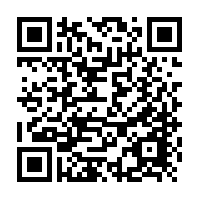Once John Montagu invented the sandwich few could have imagined that apart from its obvious culinary applications it will become a buzzword in the field of psychology and business communication.
The fact that the sandwich is omnipresent in so many aspects of our lives can sometimes deflect our attention from all too obvious shortcomings of the sandwich itself.
Check out: The “Sandwich Approach” Undermines Your Feedback
Listen
Glossary
- feedback – a reaction or response to a particular process or activity
- undermine – weaken gradually
- acknowlegde – to admit to be real or true
- unilteral – relating to, occurring on, or involving one side only
- reluctant – unwilling; disinclined
- anxiety – distress or uneasiness of mind caused by fear of danger ormisfortune
Think about it
Are the statements below true or false?
- Those who receive sandwiched feedback feel less insecure about bad information.
- Thanks to the sandwich technique the feedback comes across as more balanced.
- The “easing in” part of the feedback session may achieve the opposite effect to the one desired.
- The sandwich does not allow both sides to participate in the feedback session with equal rights.
- One of the differences between the sandwich approach and mutual learning approach is that the message is reworded.
Practice makes perfect
In the sentences below replace the phrases in bold with the expressions from the original text
- Have you ever used the “sandwich approach” to give negative feedback to people working directly under you?
- In addition, they are likely to disregard your positive feedback, believing it is not real.
- It is important to give positive feedback, but saving it to compensate for negative feedback delays the value of the positive feedback.
- After we agree on what happened, I want to say more about my concerns and see if you are of the same opinion as me.
- Second, because everyone knows the planned sequence of the meeting, everyone can cooperate to make the meeting stick to the plan.
Fill in the blank spaces with the correct words.
This transparent approach is more effective than the sandwich approach ______ several reasons. First, by sharing your strategy and asking them if it ______ work, you, Alex, and Stacey jointly design the meeting process, increasing ______ chance that you will all learn from it. Second, because everyone knows the planned sequence of the meeting, everyone can work jointly to keep the meeting ______ track. Finally, ______ expressing that you may not have all the information and that you may even ______ contributed to the problem, you shift the meeting from ______ in which you’re simply telling Alex and Stacey what you think to a meeting in which all of you are exploring together what happened and planning how to move forward.
Explore it more
(773)
Podcast: Play in new window | Download





